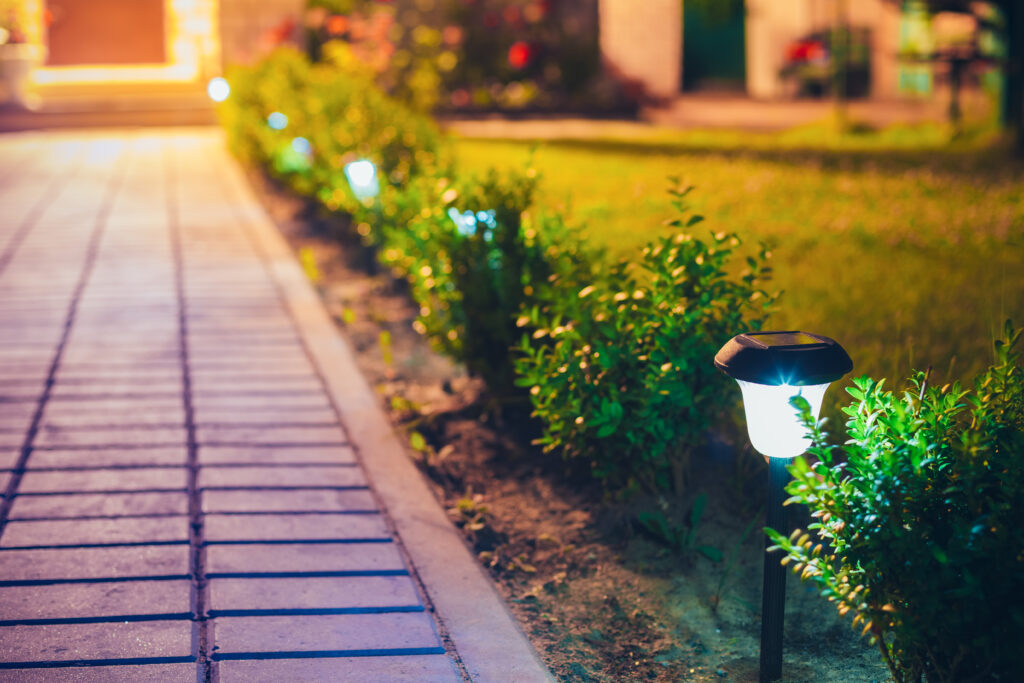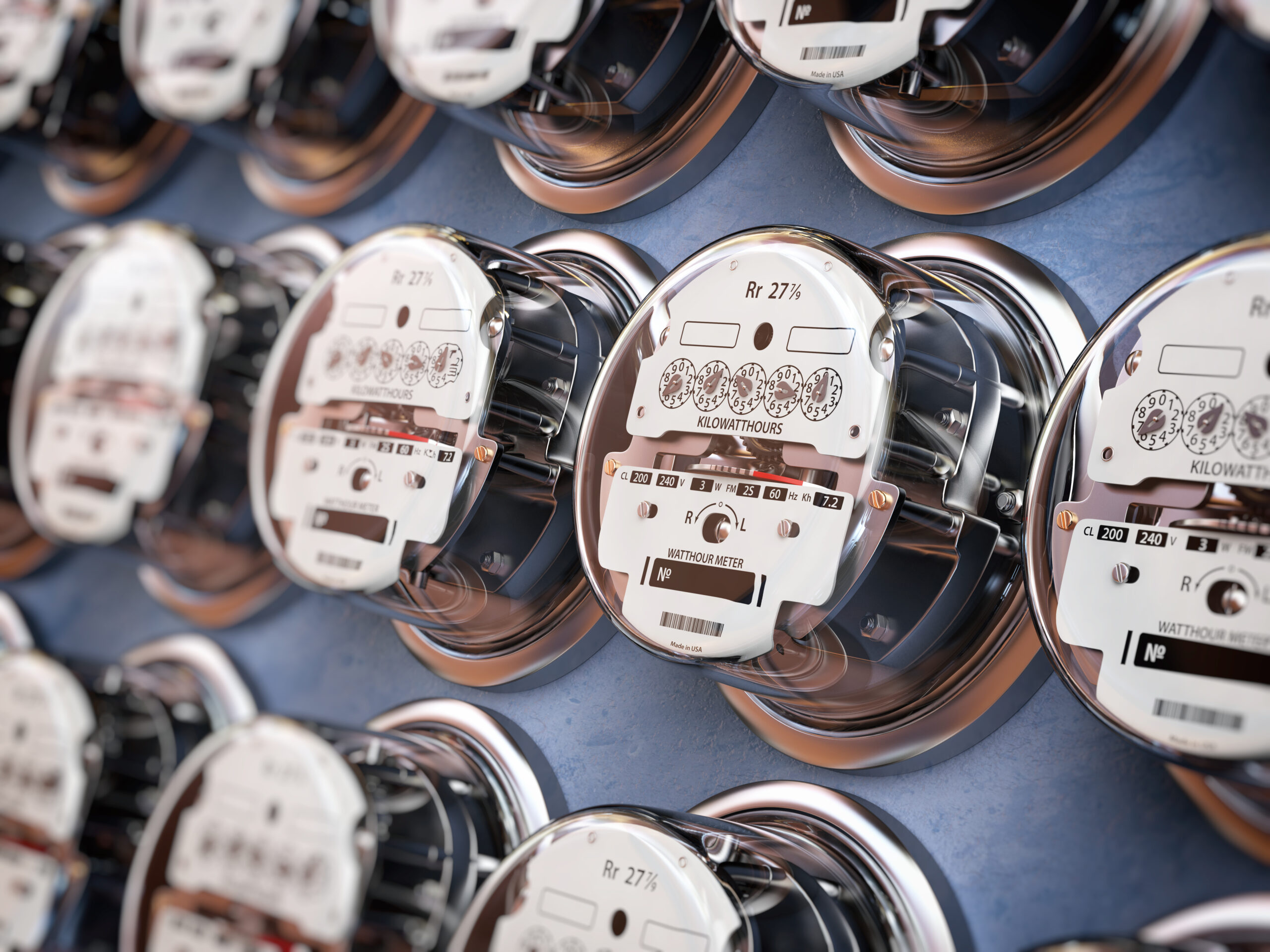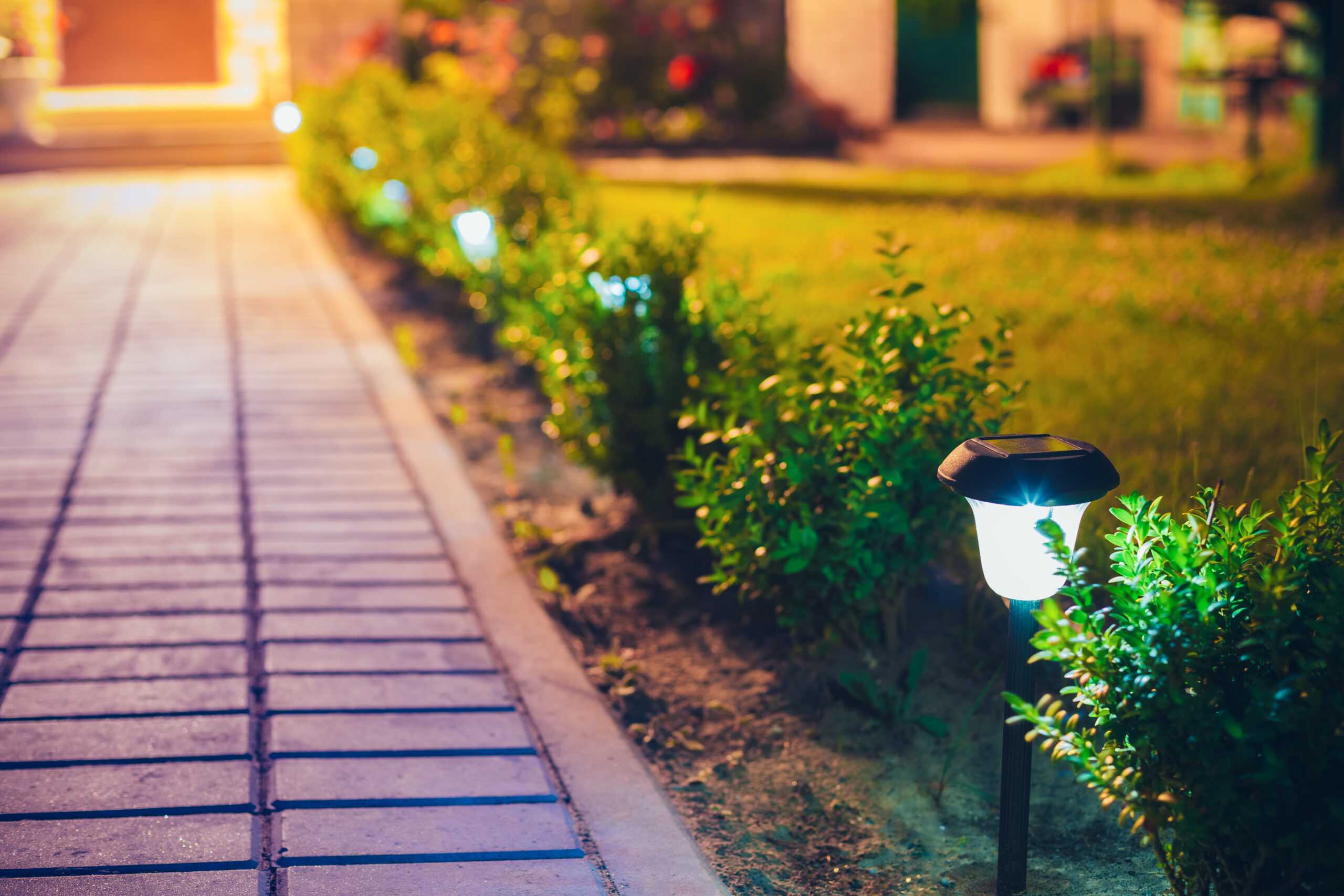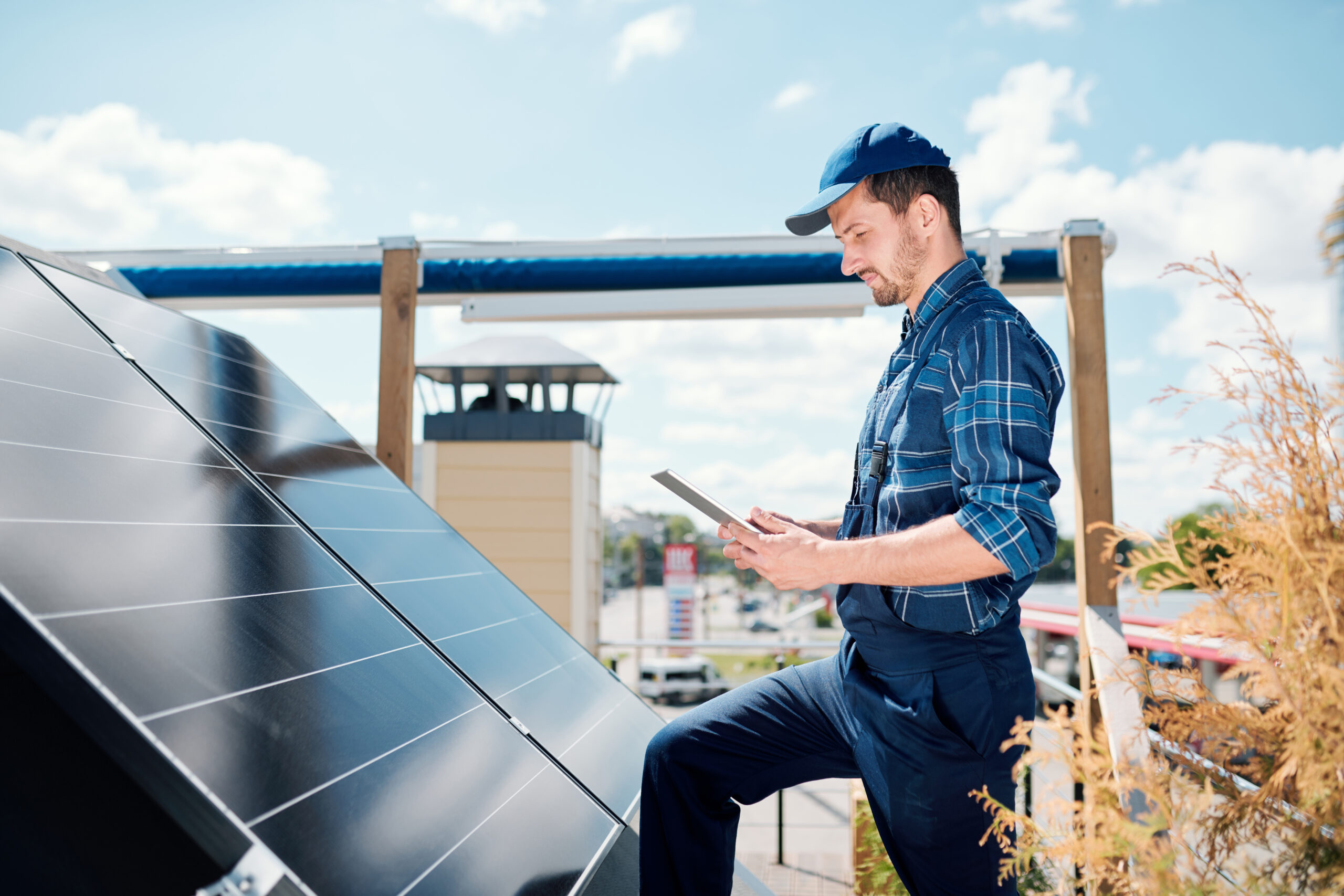
Looking to save on energy bills and make your home more eco-friendly? Upgrading your outdoor lighting to a solar-powered outdoor lighting system is a smart choice. There are two main options: connecting your existing lights to a solar-powered battery or installing stand-alone solar lights.
1. Installing Stand-Alone Solar Lights
Stand-alone solar lights are an easy and affordable way to switch to solar outdoor lighting. These fixtures contain built-in batteries that charge during the day using solar energy. At night, they automatically illuminate your outdoor spaces.
Benefits of stand-alone solar lights include:
Easy installation – no wiring or technical skills required.
Low cost – most solar light fixtures are inexpensive.
Flexibility – place solar panels in sunny spots and keep lights where you need them.
A downside is that stand-alone solar lights may get dimmer as the night goes on, since the battery charge decreases over time. To improve performance, consider models with motion sensors so they only activate when there’s movement, conserving energy and providing brighter light when needed.
2. Converting Existing Outdoor Lighting to Solar Power
If you love your current outdoor lights but want to power them sustainably, you can convert existing lighting systems to solar power. This approach lets you keep your fixtures while reducing electricity costs and carbon footprint.
Here’s what you need:
LED Bulbs
Replace traditional bulbs with energy-efficient LED bulbs, which produce the same brightness as incandescent bulbs but use far less power.
Battery Bank
Install at least one deep-cycle battery rated at 150 amp-hours (Ah) or more. This capacity ensures your lights stay on even during cloudy days or after extended use.
Solar Panels
To keep your battery charged, use solar panels with a combined output matching your energy needs. For a 150 Ah battery with around 8 hours of daily sunlight, aim for solar panels totaling at least 120 watts — for example, two 60-watt panels or a single 120-watt panel.
Charge Controller
A charge controller improves system safety and performance by preventing your batteries from overcharging. It sits between your solar panels and battery bank.
Power Inverter
An inverter converts the direct current (DC) stored in your batteries into alternating current (AC) to power your existing outdoor lighting. A 600-watt inverter is a good choice to handle most residential outdoor setups.
Installation Tips for Solar Outdoor Lighting Systems
Battery placement: Store your battery in a secure, weather-protected location.
Solar panel positioning: Install panels in areas with maximum sunlight exposure and minimal shading.
Switch control: Add a manual switch so you can turn off your lights when they’re not needed, conserving battery power.
Summary
Switching to solar-powered outdoor lighting reduces your energy bills, increases sustainability, and can be tailored to your needs — whether you choose stand-alone solar lights or convert your existing system. Invest in quality components, install them correctly, and enjoy reliable, eco-friendly outdoor illumination.




